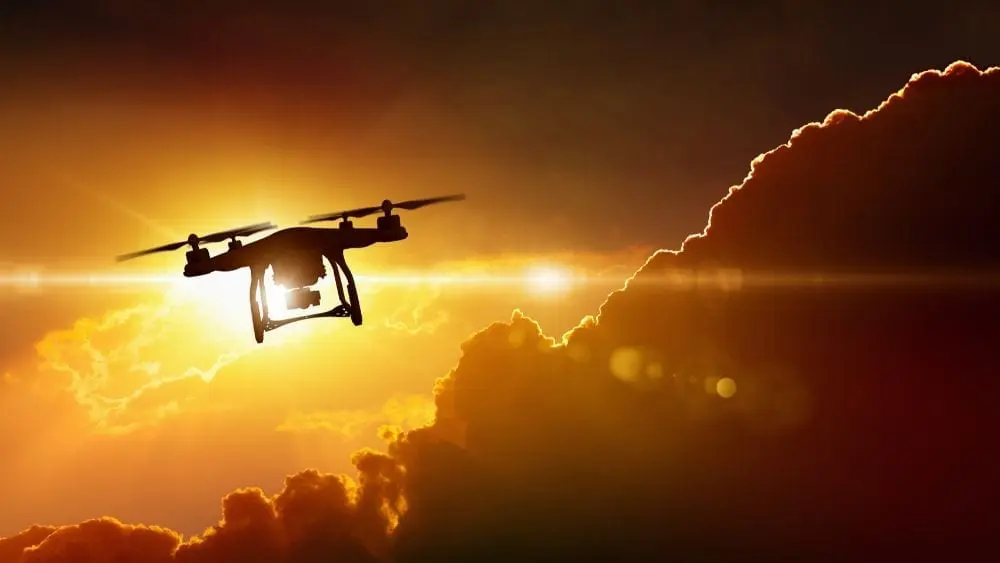
Drones have, if you’ll forgive the word, skyrocketed in popularity over the past couple of years.
They combine the fun of model airplanes with practical uses like aerial photography. So, it’s no surprise that drones are being used in an expanding number of ways, both recreationally and commercially, and that includes drone use in home construction and real estate.
“At Trumark Homes, we utilize drones all the way from land acquisition through the marketing stage of the homebuilding process,” says Eric Nelson, vice president of community development for the California-based builder. “We own two drones that we use to select sites and better understand the topography and surrounding neighborhood, monitor construction progress and grading activities.”
Drones for Business Use
Drones have made aerial views of properties more accessible for builders like Trumark Homes to use for tracking construction and sharing images with clients. Renee Stoll, owner of Florida-based Big Red Media LLC and a licensed real estate agent, uses drone videography and photography services to market her listings, but she also works with developer clients who want aerial views of land for possible development.
“The bird’s-eye view gives a perspective not available otherwise, especially for larger properties,” she says.
“People haven’t really experienced what [drone] videos and photos are like,” says Dan Edmonson, founder and CEO of Massachusetts-based Dronegenuity LLC, which provides drone videography and photography for clients, including commercial and residential real estate projects. “The images tend to amaze everyone.”
Edmonson, Stoll and others who use drones commercially must follow the Federal Aviation Administration’s operational rules for business use, known as Part 107. This includes users obtaining a required remote pilot airman certificate.
But what if you, the buyer, want to track your home’s construction progress with a drone? Could you do that? It depends. First, check with your builder for permission to access the build site to ensure you won’t interfere with any work being done.
“We have not encountered this request yet, but would be more than willing to entertain the idea so long as they are operating in a safe way,” Nelson says.
Builders know that interest in drone use is increasing, particularly when it comes to monitoring home construction. While homebuyers are excited to see progress on their home, a construction site is not necessarily safe for looky loos. Drones can change that.
A quick survey of panelists of the New Home Source Insights Panel found that most respondents are open to the use of drones to stay up-to-date on their home’s construction, with one panelist saying they already use a drone to monitor construction.
Know Before You Fly
Before you use a drone, you need to follow the FAA operational rules. As Nelson says, “operating in a safe way” is key here and, just as with the business operation of drones, the FAA regulates personal or recreational use.
“The FAA’s goal is the safety of the national airspace and to protect property and people in the air and on the ground,” says Debbie Esterak, a partner in the Austin, Texas, law office of Rogers, Morris & Grover.
“You don’t need [the airman certificate] for personal use,” Stoll says, “but a lot of the same rules apply. A novice flying a drone needs to be extremely careful. It’s very easy to crash into a tree or piece of construction equipment and do damage to the drone and other items.”
The FAA, which calls drones “small unmanned aircraft systems,” lists its safety guidelines for recreational drone use. Most are fairly common sense, such as the following:
- Keep your drone in eyesight at all times.
- Don’t fly in adverse weather conditions (unless you want a crashed drone).
- No careless or reckless operation and no operating under the influence of drugs or alcohol.
- Don’t fly intentionally over unprotected people or moving vehicles.
- Don’t fly over people in areas where there is an expectation of privacy without the person’s permission.
- Contact the control tower before flying within five miles of an airport or helipad.
Privacy of other residents is a big concern, so it’s important that drone users be aware of any privacy laws related to drones (on top of the FAA rules) in their state, says Esterak.
The restriction of flying near an airport is a major safety consideration, particularly for aircraft that are landing or taking off. Even if you ask the control tower for permission, the tower doesn’t have to give it, “regardless of the height you want to go,” Esterak says.
So, it’s important to be aware of your surroundings, and if people are already living in your community, be a good neighbor and let them know you’ll be sending your drone up. Even if they’re not out in their backyard, it’s still a nice courtesy. It could also be a great way to connect with new neighbors.
You should also be aware that the FAA requires all owners of drones weighing between .55 and 55 pounds to register online before sending their drone up for a spin.
To learn more about the FAA regulations (business and recreational), visit knowbeforeyoufly.org or download the FAA’s free app, B4UFLY, available for iPhone and Android devices.

Judy Marchman is an Austin, Texas-based freelance writer and editor who, during her 20+-year career, has written on a diverse number of topics, from horses to lawyers to home building and design, including for NewHomeSource.com. Judy is the proud owner of a new construction home and has gained plenty of story inspiration from her home ownership experiences.
A horse racing aficionado, she also has written on lifestyle, personality, and business topics for Keeneland magazine and Kentucky Monthly, as well as sports features for BloodHorse, a weekly Thoroughbred racing publication, and the Official Kentucky Derby Souvenir Magazine. When she’s not in front of her laptop, Judy can usually be found enjoying a good book and a cup of tea, or baking something to go with said cuppa.
 Installing Skylights Can Lead to Better Natural Lighting and Energy Efficiency
Installing Skylights Can Lead to Better Natural Lighting and Energy Efficiency